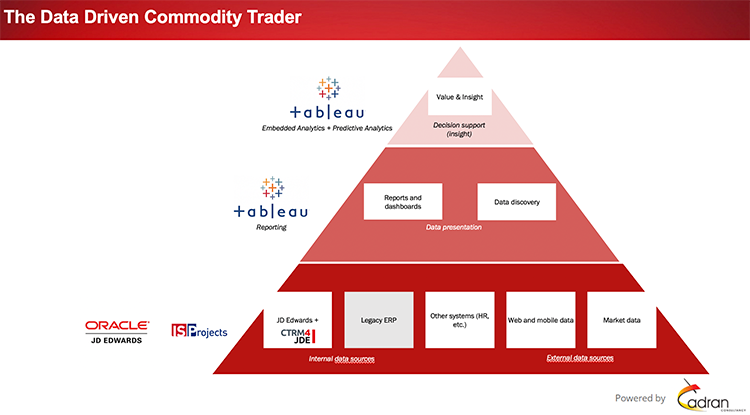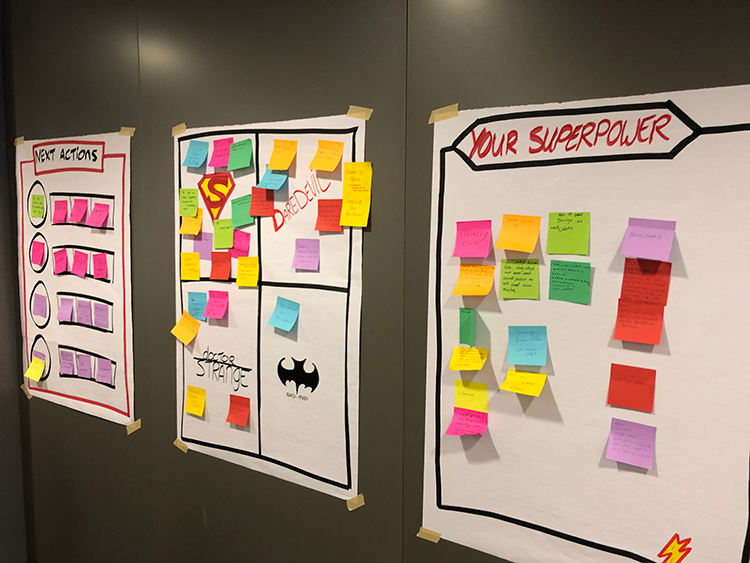Product Update: ‘4 Strategies improving the Arantys product development’
With an increase in clients, growth of a team and a product that becomes increasingly complex, the Cadran CTRM team has recently made several changes in its approach to product development. These changes both benefit clients and can speed up the development of our product. With most of these changes implemented at present, we are already reaping the benefits of the first results. Other improvements are part of an ongoing continuous improvement process. Many of the improvements you see below will serve as improvements in our implementation and consulting strategy towards the future. This blog provides you with a general update on these developments and gives you, as a prospect or client, an insight into what you can expect. We will touch upon our product vision, our approach to our backlog and product design, the newly minted software development team and our new approach to testing.
1. The Data-Driven Commodity Trader
Firstly, we have further refined our vision for where our product is best positioned. By choosing an integrated approach between ERP, trading platform and reporting, an integrated system can support the value chain within a commodity trading company. Our product will further focus on the axis between ERP and trading, with a specific focus on intergrating the entire process into a solid backbone. In release 3.6 we will bring this into practice by further integrating our solution with the standard modules of JD Edwards, with an integration of manufacturing into Arantys. With improved informatization of a commodity trading company, your company is able to get an accurate and real-time insight into your business and with that improve your profitability. A better insight into trading risks and profitability is currently helping our customers to expand the scope of their business. After further informatization of core processes, we make them available for insight by means of Tableau. In addition we can use these processes to implement robotic process automation by means of the JD Edwards Orchestrator, allowing you to further automate your business. You can then further integrate this platform with external data sources or partners and we can help you make this data available to your clients and to predictive analytics.
Many aspects of our ambition have become visible over the last six months, more will become visible going forward. We are looking at creating a user group that should nurture an ongoing discussion between you as a prospect or client and our product development team.

2. Backlog and Product Design
Secondly, where in the last years the backlog of our product was mostly determined by specific requests (as part of implementations for clients as is often the case for young products) we have now transitioned towards a product roadmap determined by multiple stakeholders. Based on input from clients, prospects, our view on the market and input from our consultants, our newly appointed Product Owner determines the backlog. All our functional and technical consultants are able to suggest user stories that depict an improvement. The Product Owner prioritizes them and assigns them to a release. Our backlog now consists of smaller topics, but are picked up quicker. This change brings you a more clear product roadmap and allows you to influence our roadmap more directly. The first sessions with clients have taken place and this will be continued and expanded going forward.
We have done a large redesign of the technical foundation of our solution. This results in a more scalable solution. Moreinformation on this can be found in the release notes of 3.5 which will be released soon. In addition, we are now adopting a technical strategy whereby specific functionalities can be turned on and off more easily, without having to redesign the software as a whole. This reduces the impact of an upgrade, and could reduce it to a technical retrofitting exercise. This will allow our clients to remain release-current, without having to enable all new functionality needed. Also, we have started to standardize our releases further, allowing us to implement a new version of our software at new JD Edwards clients more quickly and automated.
Last year we have also changed our approach to the integration of business intelligence with our product. As we have become a Tableau partner, we have now further integrated Tableau into our product design and development strategy. By integrating dashboards and insights from Tableau into our product deeper, insights can be created quicker and more reliable.
3. Software Development Team
Thirdly, we have founded an internal software development team where we combined 5 newly trained developers with some of our most experienced. This team has started working by means of the agile/scrum methodology. In 2-week sprints, user stories are resolved and implemented. Everyone within our company is able to see the progress and visit the Sprint Review sessions. For now, they have been working on our 3.5 release. This team does internal code reviews, and by means of refinement sessions, they continuously review the quality of the user stories that enter the sprints. Soon this team will also start performing work for clients, allowing you to make use of these improvements as well!
The team named itself Mars as multiple rooms at our office were named after continents, and we consider this team ‘out of this world’! The team brings a whole new energy to our product development approach and the wider organization. The team has an innate self-learning nature. Their retrospectives in different themes have sprouted a whole other way of working that will remain sustainable. By introducing developers from a different background, the team looks at problems with a new angle, which is already resulting in new approaches to problems. New technologies are used more and more, but also new products are being developed aimed at making implementations and development easier. More on this soon!

4. Testing
Lastly, we needed to take a different approach to our releases when it comes to testing. Previously, our solution allowed for a more unit tested approach. With an increase in integration between different functionalities and increased complexity in our solution, we needed to make sure that our testing became more rigorous. We have now adopted DWS SwiftTest that allows us to document our tests, and run nightly test runs of integrated tests. These tests mimic real client business scenarios. Every step is documented by means of screenshots, allowing us to see quickly where a problem might have occurred. This allows us to scope our product better and for a more rigorous quality control before rolling this out. Already more than 200 test scripts have been documented and are run repeatedly. This significant investment allows us going forward to focus better and release quicker. You will experience a more reliable product that has been tested rigorously. While not immediately this year, in the long run, this will shorten our time to market. More on this in blogs to come!
Documentation of our product has been automated to a large extent and is made more rigorous. In addition we have migrated to a new cloud-based development environment and have made sure that we can release quicker and can speed up our delivery. This has already resulted in significant savings of time and energy needed to create this within the first months.
Over the coming year, we will implement further improvements to our release management and product approach. This is the start of a new approach to our product and market. Are you interested in learning more about this, and what benefits these changes can bring you? Or are you interested in our product and new releases? Contact Bart Dix.



